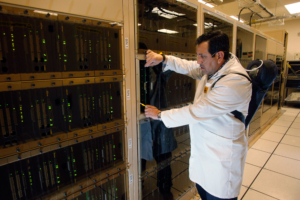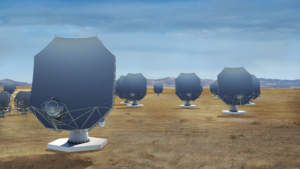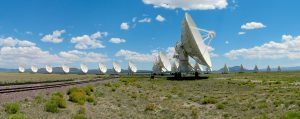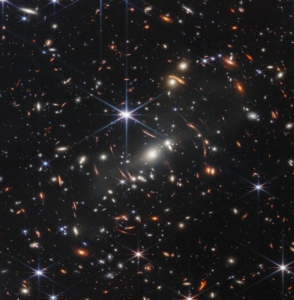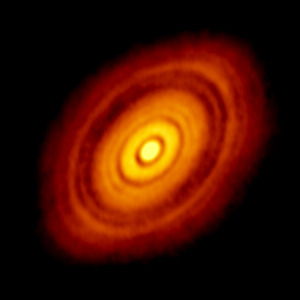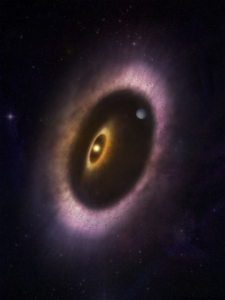The Board of the Atacama Large Millimeter/submillimeter Array (ALMA)— an international collaboration in which the National Science Foundation’s National…
Design Review for ngVLA Antenna Clears Way for Prototype Construction
The design for the ngVLA prototype antenna has passed a thorough review by a panel of external experts and the project now is cleared to proceed to manufacture the prototype.
Silent as the Night: Why Radio Astronomy Doesn’t Listen to the Sky
In the 1997 movie Contact, Ellie Arroway is a young radio astronomer played by Jodie Foster. Ellie’s on a mission…
Put a Ring On It: How Gravity Gives Astronomers a Powerful Lens On the Universe
Gravity can change the path of light, and sometimes focuses the light of distant galaxies to create a gravitational lens or Einstein Ring. It is a common sight in modern deep field images, but the effect was first seen by the Very Large Array in 1987.
ALMA’s 2014 Ground-Breaking HL Tau Results Have Appeared in Over 1,000 Scientific Papers in Less Than a Decade
Ground-breaking 2014 HL Tau observational data from the Atacama Large Millimeter/submillimeter Array (ALMA) has been cited in more than 1,000 scientific studies in the past 7.5 years, aiding in major breakthroughs in scientists’ understanding of planet formation. The milestone comes as engineers at the U.S. National Science Foundation’s National Radio Astronomy Observatory (NRAO) embark on ambitious upgrades to the receivers responsible for the clarity of initial observations.
Scientists on the Hunt for Planetary Formation Fossils Reveal Unexpected Eccentricities in Nearby Debris Disk
Using the Atacama Large Millimeter/submillimeter Array (ALMA), astronomers have imaged the debris disk of the nearby star HD 53143 at millimeter wavelengths for the first time, and it looks nothing like they expected. Based on early coronagraphic data, scientists expected ALMA to confirm the debris disk as a face-on ring peppered with clumps of dust. Instead, the observations took a surprise turn, revealing the most complicated and eccentric debris disk observed to date.






